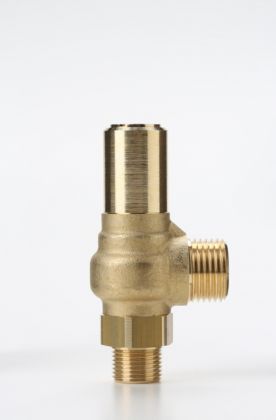
Safety valve model D7/CS (PN 60)
DN8 (1/4") - DN10 (3/8") | Orifice 7mm
Industries > Refrigeration and Air Conditioning
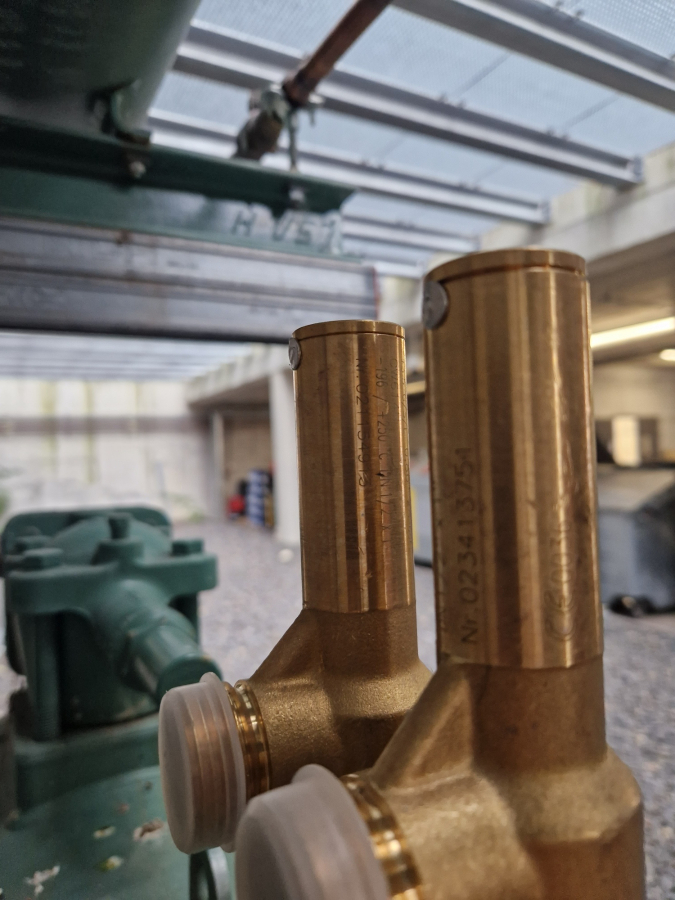
In the refrigeration and air conditioning industry, pressure management is crucial for the proper operation of systems. Safety valves (PSVs) are installed to protect equipment from overpressure and are set to activate when internal pressure exceeds safety limits. In many refrigeration systems, the operating pressure is very close to the valve set pressure, a choice driven by specific needs related to refrigeration cycle optimization and energy efficiency.
Modern refrigeration and air conditioning systems are increasingly compact and densely packed with components, designed to optimize available space. These systems often minimize space requirements while ensuring high performance in limited dimensions. The main challenge is to provide end users with a product that, despite its compact size, maintains efficiency and safety while integrating seamlessly into complex environments.
In large industrial refrigeration and air conditioning systems, pressure safety valves (PSVs) are essential for protecting both high-pressure and low-pressure lines, ensuring safe operation and the integrity of the entire system.
High-Pressure Line: This line carries compressed refrigerant to condensers and other sections of the system, such as heat exchangers. Due to the high pressures involved (often exceeding 30 bar), an overpressure in this section can cause severe damage, such as pipe rupture or internal compressor component failure. In extreme cases, it may even pose an explosion risk. PSVs are typically installed on this line after compressors or on liquid receivers. After the compressors, PSVs protect the system from overpressure caused by compressor malfunctions, while on liquid receivers, they prevent damage from excessive pressure in the stored refrigerant. In both cases, PSVs automatically activate, releasing excess refrigerant to restore safe pressure levels and maintain system integrity.
Low-Pressure Line: This line carries refrigerant to evaporators, where the refrigerant gas expands, absorbs heat, and lowers its pressure. Although pressures are lower than in the high-pressure line, it is still crucial to protect these lines from excessive pressure increases, which may result from expansion system failures, accumulation of non-condensable gases, or malfunctions in refrigerant evacuation processes. Overpressure in the low-pressure line could compromise the efficiency of the refrigeration cycle and damage components. Safety valves installed on the gas lines in this section automatically activate when pressure exceeds set limits, releasing excess refrigerant to prevent system damage.
Therefore, protecting both high- and low-pressure lines is essential to avoid structural damage and malfunctions, ensuring that the system operates safely, efficiently, and in compliance with safety regulations. Proper installation and maintenance of safety valves on both lines are crucial to preventing service interruptions and extending the operational lifespan of the refrigeration or air conditioning system.
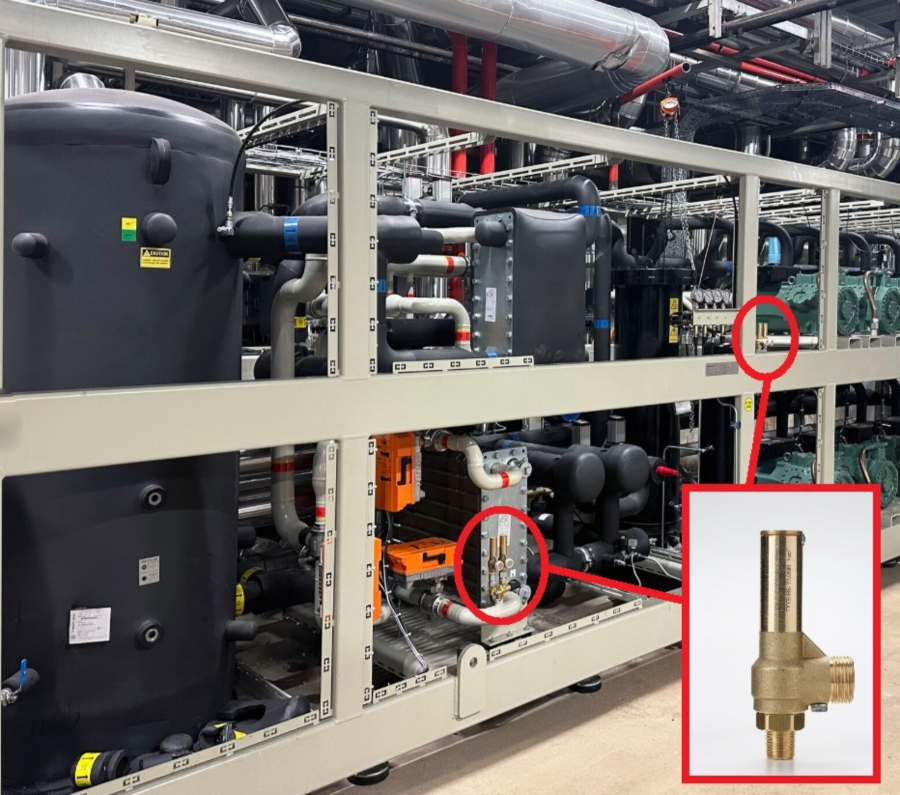
When the operating pressure is close to the safety valve’s set point, even slight variations caused by temperature fluctuations or load changes can trigger the valve, leading to unwanted discharge. This results in:
Refrigerant Losses, which increase energy consumption, compromise system efficiency, and introduce operational costs due to fluid loss from the closed refrigeration circuit.
Risk of Malfunctions, which can disrupt the refrigeration cycle and affect the thermal stability of the system.
To prevent unwanted safety valve activations, we set the PSV with a positive margin, adjusting the activation pressure to +3% above the nominal set point. This solution, compliant with ISO 4126, ASME, and PED standards, offers two main advantages:
It ensures that the valve activates only in emergency situations, protecting the system from dangerous overpressures.
It prevents unnecessary activations during normal operation, improving system stability and reducing maintenance costs.
As an additional control phase, all safety valves from Nuova General Instruments for refrigeration and air conditioning are tested at 90% of the set pressure using a nitrogen mixture (95% N2 - 5% H2). Using certified sniffers, we verify the complete absence of hydrogen leaks at this pressure value. Since hydrogen molecules are much smaller than those of traditional refrigerants, this ensures both the reliability and safety of the system, as well as compliance with Regulation (EU) No. 517/2014 (F-Gas), regarding allowed refrigerant losses below 3 grams per year.
Frequent opening and closing of the safety valve, even for short periods, accelerates the wear of seals and contact surfaces. This can compromise the valve’s ability to maintain a reliable seal over time, increasing the need for maintenance and the risk of malfunctions. If the PSV fails to activate properly in case of overpressure, it exposes the system to damage to tanks or, in extreme cases, the risk of explosions.
To ensure reliable operation over time, we use high-performance soft seals designed to provide a hermetic closure even after the valve has operated. This approach reduces the risk of leaks and keeps the system safe.
The special configuration of our seals not only optimizes valve sealing but also offers greater resistance to small particles or impurities in the process fluid. In this way, our valves ensure stable performance, reducing maintenance needs and providing long-lasting protection for systems.
For refrigeration and air conditioning systems operating with CO2, with safety valves having set pressures of 80 barg or lower, we recommend using EPDM seals, which are more effective in sealing than PTFE.
In refrigeration and air conditioning systems, compact safety valves are crucial due to the limited space often found in many installations. These systems frequently operate in environments with limited dimensions and complex layouts, where every component must be optimized to ensure efficiency without compromising reliability.
Nuova General safety valves for refrigeration and air conditioning systems are specifically designed to meet the need for compact spaces without compromising performance. Their compact design saves space while maintaining optimal performance in protecting against overpressures. This balance between small size and efficiency guarantees system safety, avoiding excessive bulk. Additionally, their compact structure facilitates installation and maintenance, ensuring that the valves operate reliably even in space-constrained environments.
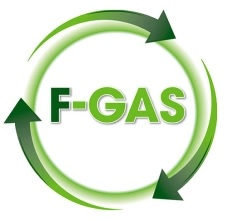
Regulation (EU) No. 517/2014 (F-Gas) regulates the use of fluorinated gases to reduce the environmental impact of refrigeration and air conditioning systems. It imposes leak controls, registration requirements, and restrictions on the use of high-GWP refrigerants. Hermetically sealed equipment, with leaks below 3 g/year, is subject to reduced checks compared to other systems, making this target a key reference point for most refrigeration and air conditioning equipment manufacturers.
Complying with F-Gas ensures safe, efficient systems in line with environmental regulations, contributing to the reduction of greenhouse gas emissions and the sustainability of the HVAC-R industry.

DN8 (1/4") - DN10 (3/8") | Orifice 7mm
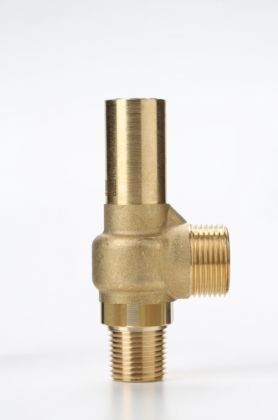
DN10 (3/8") - DN15 (1/2") | Orifice 10mm
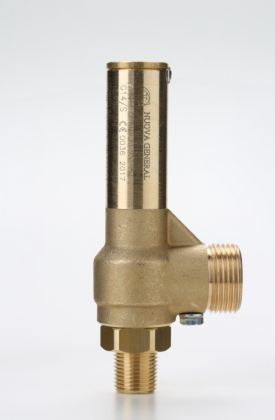
DN15 (1/2") - DN20 (3/4") - DN25 (1") | Orifice 13,5mm
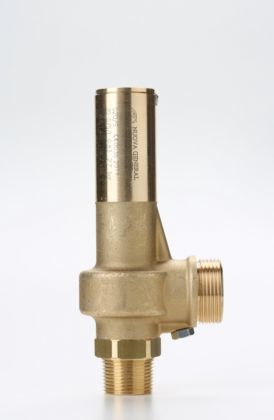
DN20 (3/4") - DN25 (1") | Orifice 20mm
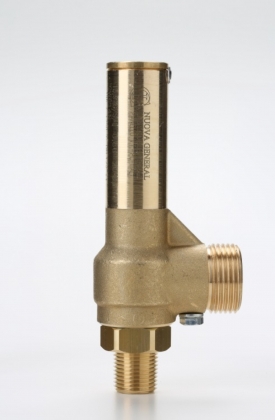
DN15 (1/2") - DN20 (3/4") - DN25 (1") | Orifice 5mm
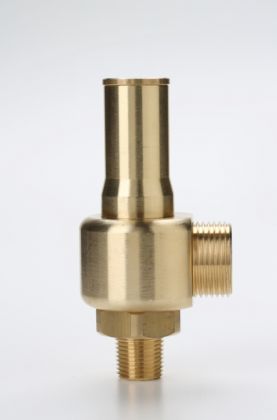
DN15 (1/2") - DN20 (3/4") | Orifice 10mm
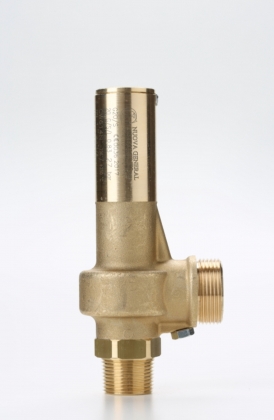
DN15 (1/2") - DN20 (3/4") - DN25 (1") | Orifizio 10mm
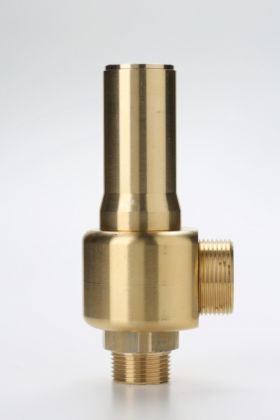
DN20 (3/4") - DN25 (1") | Orifice 14mm
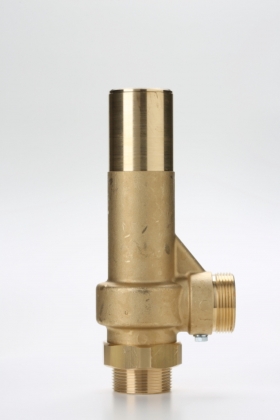
DN25 (1") - DN32 (1"1/4) | Orifice 14mm
Choosing a Nuova General Instruments safety valve means relying on a product designed and manufactured according to the highest quality and safety standards. In addition to our years of experience and continuous focus on innovation, we offer a range of dedicated services to support our customers at every stage, from product selection to after-sales assistance:
• ⚡ Fast Delivery: Standard production within 10 business days, with a Fast Track option for shipments in just 5 days.
• 📦 Flexible Lot Sizes: We provide both single valves and large batches up to 1000 units, always ensuring top quality.
• 🎨 Customization: Laser marking, colored caps for calibration identification, and removable barcode labels for simplified management.
• ✅ Third-Party Testing: Option to obtain 3.2 test certificates from prestigious organizations such as INAIL, TUV, RINA, LLOYD, DNV, and ABS.
• 📄 Online Certificates: Immediate and unlimited access to technical documentation of the valves through our dedicated portal.
• 🛠️ Product Samples: Ability to test our valves before placing regular orders, with specialized technical support.